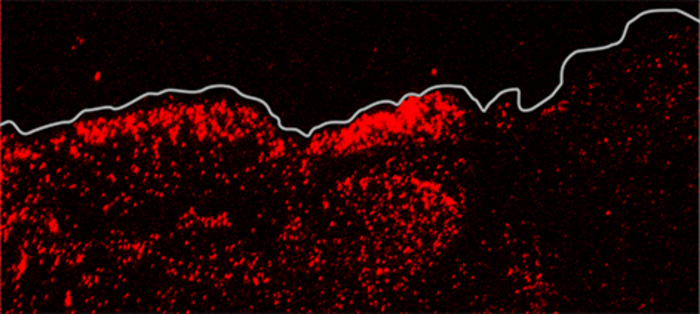PIEZO1, an ion channel mechanosensor found within cells, has been revealed to play a key role in regulating the speed of skin wound healing by researchers at the University of California, Irvine (UCI).
Published today in eLife, the study (“Spatiotemporal dynamics of PIEZO1 localization controls keratinocyte migration during wound healing”) found that in mice lacking the ion channel protein PIEZO1 in keratinocytes, skin wounds heal faster than in mice with increased PIEZO1 function in keratinocytes.
“Keratinocytes, the predominant cell type of the epidermis, migrate to reinstate the epithelial barrier during wound healing. Mechanical cues are known to regulate keratinocyte re-epithelialization and wound healing; however, the underlying molecular transducers and biophysical mechanisms remain elusive. Here, we show through molecular, cellular, and organismal studies that the mechanically activated ion channel PIEZO1 regulates keratinocyte migration and wound healing,” write the investigators.
“Epidermal-specific Piezo1 knockout mice exhibited faster wound closure while gain-of-function mice displayed slower wound closure compared to littermate controls. By imaging the spatiotemporal localization dynamics of endogenous PIEZO1 channels, we find that channel enrichment at some regions of the wound edge induces a localized cellular retraction that slows keratinocyte collective migration. In migrating single keratinocytes, PIEZO1 is enriched at the rear of the cell, where maximal retraction occurs, and we find that chemical activation of PIEZO1 enhances retraction during single as well as collective migration.
“Our findings uncover novel molecular mechanisms underlying single and collective keratinocyte migration that may suggest a potential pharmacological target for wound treatment. More broadly, we show that nanoscale spatiotemporal dynamics of Piezo1 channels can control tissue-scale events, a finding with implications beyond wound healing to processes as diverse as development, homeostasis, disease, and repair.”
“Our collaborators from Ardem Patapoutian’s lab at The Scripps Research Institute, observed that in mice with reduced PIEZO1, wound healing is faster. We wanted to determine the ‘how,’ ‘when’ and ‘where’ of PIEZO1’s involvement, in order to find potential treatments that might speed healing,” says Medha Pathak, PhD, assistant professor at the UCI School of Medicine Department of Physiology & Biophysics. “For this, my lab developed new approaches to visualize PIEZO1 while wound healing is taking place in vitro.”
PIEZO1 is among a number of other proteins that are able to sense mechanical cues and provide instructions on the actions the cell should take. Previous research suggested that mechanosensors are instrumental in wound closure, however the specific mechanosensor involved, was unknown. This was the first study in which the role of PIEZO1 in wound healing was investigated.
The skin, the largest organ of the body, protects against external insults while also enabling touch sensation. Wounding of the skin interferes with these functions and exposes the body to an increased risk of infection, disease, and scar formation.
During wound healing, keratinocytes, the most abundant cell type in the topmost layer of the skin, move inward from the edges of the wound to close the wound gap. This helps to restore the skin barrier, reestablishing the skin’s protective function.
“Earlier studies in the field showed that mechanical cues regulate keratinocyte migration during wound healing. Here, we show that in keratinocytes, PIEZO1 is, in fact, acting as the mechanosensor that processes such cues to regulate the speed of wound healing. To our surprise, we found that PIEZO1 accumulates at the wound edge and inhibits healing,” said first author, Jesse Holt, a graduate student in the Pathak Lab.
The findings from this study provide an understanding of how skin wound healing occurs and have the potential to guide research into new wound healing treatments. However, more research needs to be performed to confirm that reducing the activity of PIEZO1 does not cause unwanted effects, such as reduced touch sensation, and human testing will be required.



